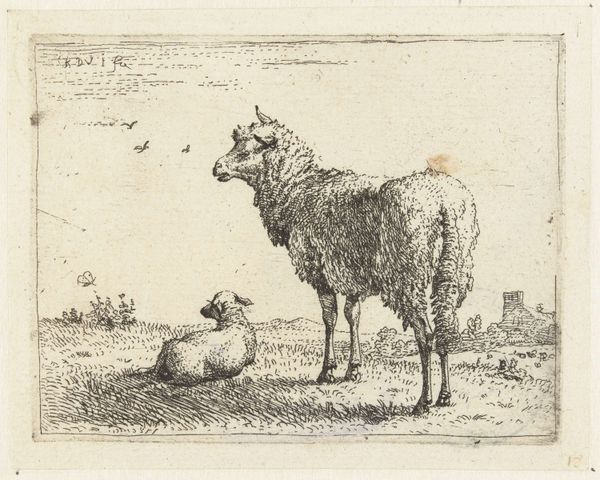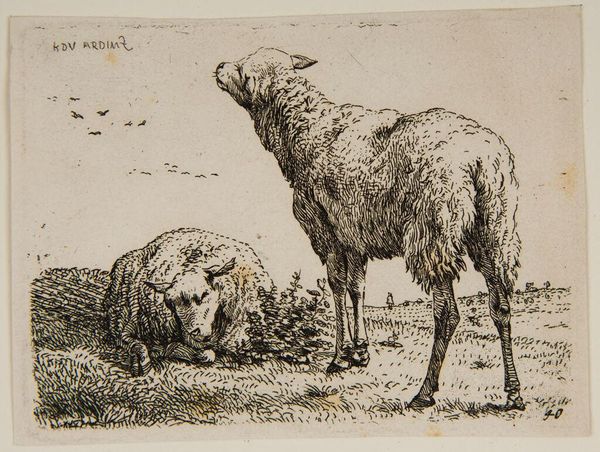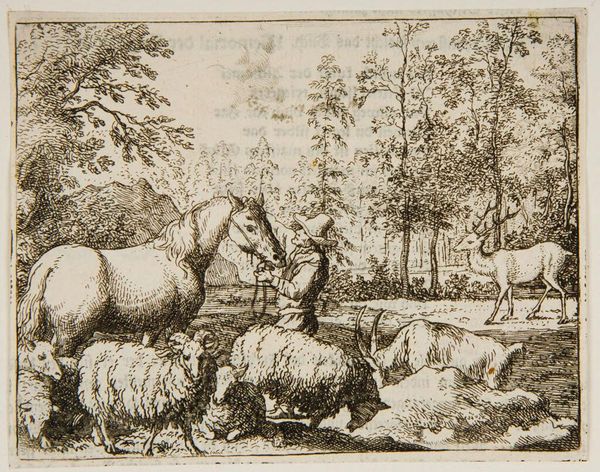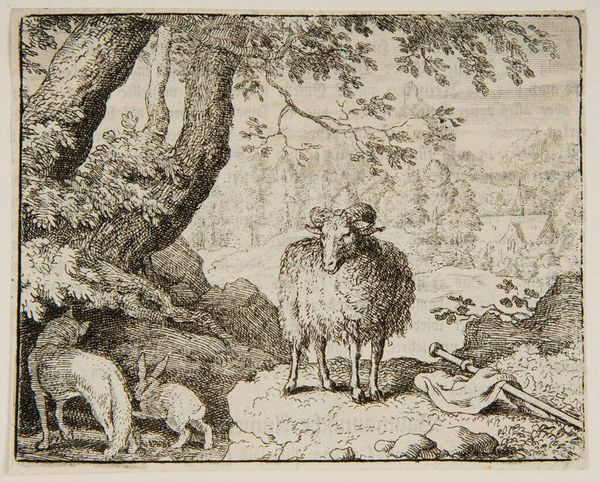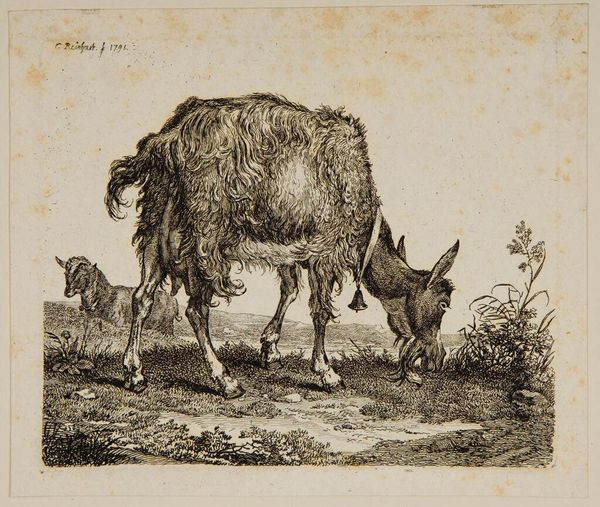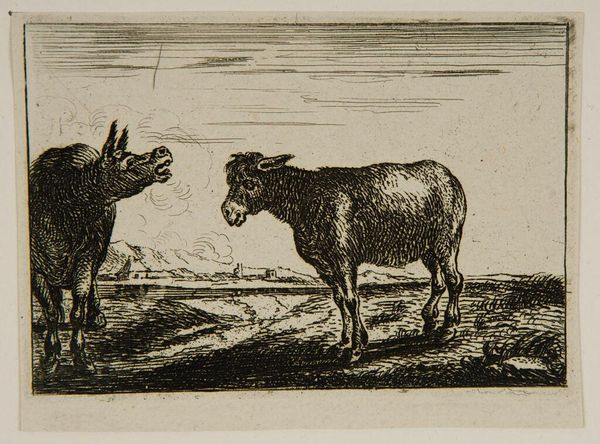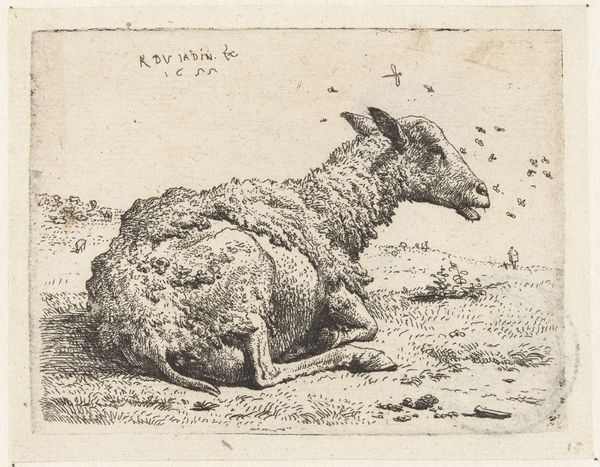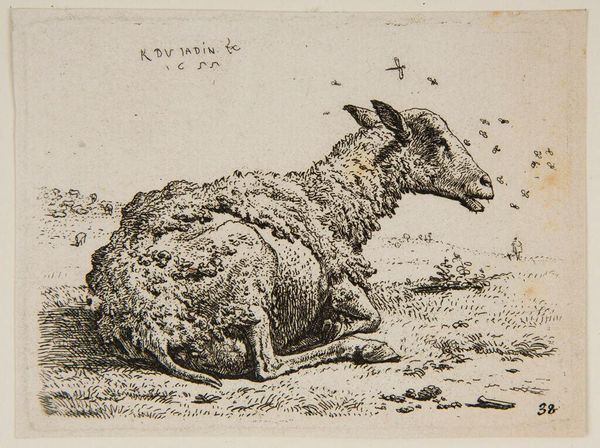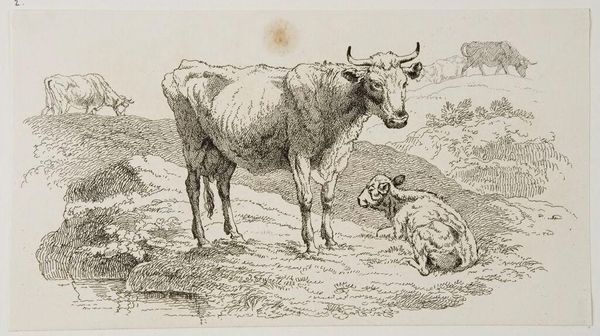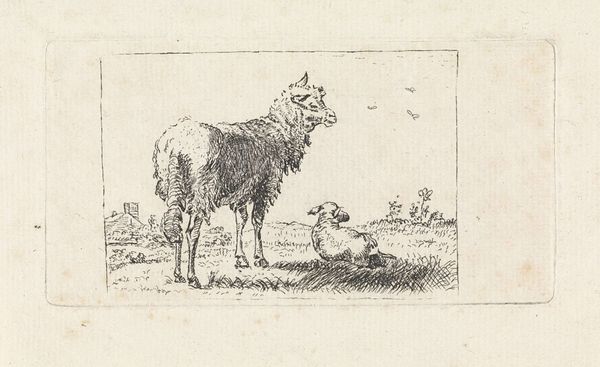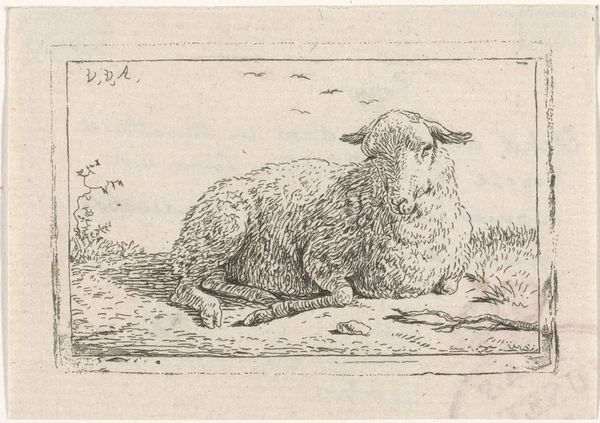
Copyright: CC0 1.0
Curator: This delicate etching is Karel Dujardin's "Ewe and Lamb," created sometime in the 17th century. Editor: There's a bucolic peace here, a simple tableau that evokes a sense of quietude, almost melancholy, despite its diminutive scale. Curator: Yes, Dujardin often focused on pastoral scenes; they were quite popular, representing a sort of romanticized view of rural life that contrasted with the increasingly urban realities of the Dutch Golden Age. Editor: Sheep are such loaded symbols, aren’t they? From religious sacrifice to notions of innocence and vulnerability, they're powerful figures in the cultural imagination. The lamb resting, under the ewe's gaze – it’s archetypal, isn't it? Curator: It’s also worth noting that while seemingly simple, these pastoral scenes often masked social realities, often erasing the harsh labor and economic disparities present in the Dutch countryside. The imagery promotes a certain idealized narrative. Editor: So, even in this seemingly gentle image, there's a complex interplay of symbols and societal narratives at work. I find that compelling. Curator: Absolutely; art gives us a glimpse into the past, as well as an opportunity to question it.
Comments
No comments
Be the first to comment and join the conversation on the ultimate creative platform.

